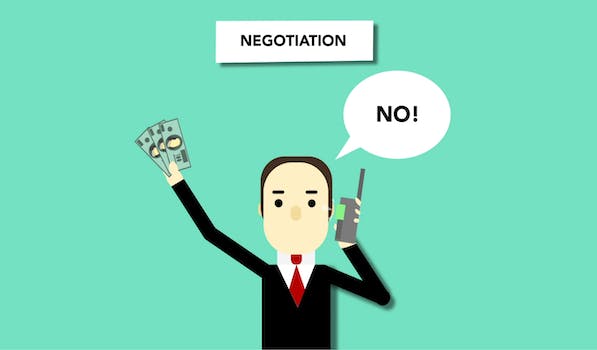How To Start A Business Letter To A Client
“Crafting a professional introduction for successful business communication.”
Introduction
When writing a business letter to a client, it is important to start with a clear and professional introduction. This sets the tone for the rest of the letter and helps establish a positive relationship with the recipient. In this article, we will discuss some tips on how to start a business letter to a client.
Importance of a Professional Tone in Business Letters
Starting a business letter to a client can be a daunting task, especially if you are new to the business world. However, it is important to remember that the tone of your letter can make or break your relationship with the client. A professional tone is crucial in business letters as it sets the tone for the entire communication. In this article, we will discuss the importance of a professional tone in business letters and provide tips on how to start a business letter to a client.
Firstly, a professional tone in business letters is important because it conveys respect and credibility. When you address a client in a professional manner, it shows that you take them seriously and value their time and business. This can help to build trust and establish a positive relationship with the client. On the other hand, a casual or unprofessional tone can make the client feel disrespected and may damage your reputation.
Secondly, a professional tone in business letters helps to ensure clarity and avoid misunderstandings. When you use clear and concise language, it is easier for the client to understand your message and respond appropriately. This can help to avoid confusion and prevent any miscommunication that could lead to problems down the line.
Now that we have established the importance of a professional tone in business letters, let’s discuss how to start a business letter to a client. The first step is to address the client properly. Use their full name and title if applicable, and make sure to spell it correctly. This shows that you have taken the time to research and understand who you are addressing.
Next, start with a greeting that is appropriate for the level of formality of the communication. For example, if you are writing to a new client for the first time, you may want to use a more formal greeting such as “Dear Mr./Ms. Last Name.” If you have an established relationship with the client, you may be able to use a more casual greeting such as “Hello First Name.”
After the greeting, it is important to establish the purpose of the letter. This can be done in the opening sentence or paragraph. Be clear and concise about what you are writing about and why. This helps the client to understand the purpose of the communication and what they can expect from the rest of the letter.
Finally, end the opening paragraph with a call to action. This can be a request for information, a meeting, or a follow-up call. This shows that you are proactive and interested in moving the communication forward.
In conclusion, starting a business letter to a client with a professional tone is crucial for building trust, establishing credibility, and avoiding misunderstandings. By addressing the client properly, using an appropriate greeting, establishing the purpose of the letter, and ending with a call to action, you can set the tone for a successful communication. Remember to always proofread your letter for errors and clarity before sending it to the client. With these tips, you can start your business letter to a client with confidence and professionalism.
Key Elements to Include in a Business Letter to a Client

Starting a business letter to a client can be a daunting task, especially if you are new to the business world. However, it is an essential part of building and maintaining a professional relationship with your clients. A well-written business letter can help you convey your message effectively and leave a positive impression on your clients. In this article, we will discuss the key elements that you should include in a business letter to a client.
1. Salutation
The salutation is the opening line of your business letter, and it is essential to get it right. Address your client by their name and use the appropriate title, such as Mr., Mrs., or Ms. If you are unsure about the client’s gender or title, it is best to use their full name. For example, “Dear John Smith” or “Dear Jane Doe.”
2. Introduction
The introduction of your business letter should be brief and to the point. Start by introducing yourself and your company, and then state the purpose of your letter. Be clear and concise, and avoid using jargon or technical terms that your client may not understand.
3. Body
The body of your business letter should provide more details about the purpose of your letter. Use this section to explain your proposal, request, or any other information that you want to convey to your client. Use bullet points or numbered lists to make your letter more readable and organized.
4. Closing
The closing of your business letter should be polite and professional. Thank your client for their time and consideration, and express your willingness to answer any questions or provide additional information if needed. End your letter with a closing phrase such as “Sincerely” or “Best regards,” followed by your name and title.
5. Call to Action
A call to action is a statement that encourages your client to take a specific action, such as scheduling a meeting or placing an order. It is an essential element of a business letter as it helps you achieve your desired outcome. Be clear and specific about what you want your client to do, and provide them with the necessary information to take action.
6. Contact Information
Include your contact information at the end of your business letter, such as your phone number, email address, and website. This information will make it easier for your client to get in touch with you if they have any questions or concerns.
In conclusion, starting a business letter to a client may seem overwhelming, but it is a crucial part of building and maintaining a professional relationship with your clients. By including the key elements discussed in this article, you can write a clear, concise, and effective business letter that will leave a positive impression on your clients. Remember to be polite, professional, and to the point, and you will be well on your way to success.
Tips for Writing a Clear and Concise Business Letter
Starting a business letter to a client can be a daunting task, especially if you are not sure where to begin. However, with a few simple tips, you can write a clear and concise letter that will effectively communicate your message to your client.
Firstly, it is important to address your client properly. Begin your letter with a formal salutation, such as “Dear Mr./Ms. [Last Name].” If you are unsure of your client’s gender or marital status, it is best to use their full name, such as “Dear Alex Smith.” This shows respect and professionalism, and sets the tone for the rest of the letter.
Next, introduce yourself and your company. This is especially important if you are writing to a new client or if you have not had previous contact with them. Briefly explain who you are, what your company does, and how you can help the client. This will give the client a better understanding of who they are working with and what they can expect from your company.
After introducing yourself, it is time to get to the main point of your letter. Clearly state the purpose of your letter in the first paragraph. This could be anything from introducing a new product or service, to following up on a previous conversation or meeting. Be concise and to the point, and avoid using overly technical language or industry jargon that the client may not understand.
Once you have stated the purpose of your letter, provide more details and information to support your message. This could include statistics, case studies, or testimonials from other clients. Use bullet points or numbered lists to break up large blocks of text and make the information easier to read and understand.
It is also important to address any potential concerns or objections that the client may have. Anticipate any questions or objections that the client may have, and address them in your letter. This shows that you have taken the time to understand their needs and concerns, and that you are committed to finding a solution that works for them.
Finally, close your letter with a call to action. This could be anything from scheduling a meeting or phone call, to asking the client to take a specific action, such as signing up for a free trial or placing an order. Be clear and specific about what you want the client to do, and provide any necessary contact information or instructions.
In conclusion, starting a business letter to a client can be a challenge, but with these simple tips, you can write a clear and concise letter that effectively communicates your message. Remember to address your client properly, introduce yourself and your company, state the purpose of your letter, provide supporting information, address any concerns or objections, and close with a call to action. With these steps, you can create a professional and effective business letter that will help you build strong relationships with your clients.
How to Address a Business Letter to a Client
Starting a business letter to a client can be a daunting task, especially if you are not sure how to address them. However, it is important to get it right as it sets the tone for the rest of the letter and can impact the success of your business relationship. In this article, we will provide you with some tips on how to address a business letter to a client.
Firstly, it is important to know the name of the person you are addressing. If you are unsure of their name, do some research to find out. You can check their company website, LinkedIn profile, or even call their office to ask for their name. Addressing someone by their name shows that you have taken the time to do your research and that you value their individuality.
Once you have their name, it is important to use the correct title. If they have a professional title such as Dr. or Professor, make sure to include it. If they have a specific job title such as CEO or Director, use that instead. Using the correct title shows that you respect their position and authority.
Next, consider the tone of your letter. If you are writing a formal business letter, it is appropriate to use the person’s last name and title, such as “Dear Mr. Smith” or “Dear Dr. Johnson.” However, if you have an established relationship with the client, you may choose to use their first name instead. Using their first name can help to create a more personal connection and show that you value their friendship.
If you are unsure of the appropriate tone to use, consider the nature of your business relationship. If you are writing to a new client or someone you have not met before, it is best to err on the side of formality. However, if you have an established relationship with the client, you may choose to use a more casual tone.
Another important consideration when addressing a business letter to a client is their gender. If you are unsure of their gender, it is best to use a gender-neutral salutation such as “Dear First Name Last Name” or “Dear Sir or Madam.” However, if you know their gender, make sure to use the appropriate salutation. For example, “Dear Mr. Smith” or “Dear Ms. Johnson.”
Finally, make sure to proofread your letter before sending it. Check for any spelling or grammatical errors, and make sure that the tone and content of the letter are appropriate for the client. A well-written and professional letter can help to establish a positive business relationship and set the stage for future interactions.
In conclusion, addressing a business letter to a client requires some thought and consideration. Make sure to use the person’s name and title correctly, consider the tone of the letter, and proofread before sending. By following these tips, you can create a professional and effective business letter that will help to establish a positive relationship with your client.
Common Mistakes to Avoid in Business Letter Writing
Starting a business letter to a client can be a daunting task, especially if you are not familiar with the proper etiquette and format. However, it is important to get it right as the first impression can make or break a business relationship. In this article, we will discuss common mistakes to avoid when writing a business letter to a client and provide tips on how to start your letter.
One of the most common mistakes in business letter writing is using an inappropriate tone. It is important to strike the right tone in your letter, which should be professional, yet friendly. Avoid using overly formal language or jargon that may be difficult for the client to understand. At the same time, avoid using slang or casual language that may come across as unprofessional.
Another mistake to avoid is not addressing the client properly. Always use the client’s name and title in the salutation, such as “Dear Mr. Smith” or “Dear Dr. Johnson.” Avoid using generic salutations such as “To Whom It May Concern” or “Dear Sir/Madam.” This shows that you have taken the time to research and address the client specifically.
It is also important to avoid starting your letter with a generic opening. Instead, start with a personalized greeting that acknowledges the client’s needs or interests. For example, you could start with “I hope this letter finds you well” or “Thank you for your recent inquiry about our services.”
Another common mistake is not being clear and concise in your message. Avoid using long, convoluted sentences or paragraphs that may confuse the client. Instead, use short, simple sentences and break up your message into smaller paragraphs. This makes it easier for the client to read and understand your message.
When starting your letter, it is important to be clear about the purpose of your message. State the reason for your letter in the opening sentence or paragraph. This could be a request for information, a proposal, or a follow-up to a previous conversation. Being clear about the purpose of your letter helps the client understand what you are asking for and how they can help you.
Another mistake to avoid is not being specific in your message. Avoid using vague language or generalizations that may not apply to the client’s situation. Instead, be specific about the client’s needs or concerns and how your product or service can help them. This shows that you have taken the time to understand the client’s situation and are offering a tailored solution.
When starting your letter, it is also important to be polite and courteous. Use polite language and avoid making demands or using aggressive language. Instead, use phrases such as “I would appreciate it if” or “Could you please” to make requests. This shows that you respect the client’s time and are willing to work with them to find a solution.
In conclusion, starting a business letter to a client can be a challenging task, but it is important to get it right. Avoid common mistakes such as using an inappropriate tone, not addressing the client properly, using generic openings, being unclear or vague, and not being polite and courteous. Instead, use personalized greetings, be clear and concise, be specific, and be polite and courteous. By following these tips, you can start your business letter to a client on the right foot and build a strong business relationship.
Conclusion
To start a business letter to a client, it is important to begin with a formal greeting, such as “Dear [Client’s Name].” The opening paragraph should introduce yourself and your company, as well as the purpose of the letter. It is also important to establish a friendly and professional tone throughout the letter. In the body of the letter, provide relevant information and details about your products or services, and explain how they can benefit the client. Finally, close the letter with a call to action and express your appreciation for the client’s time and consideration. Overall, starting a business letter to a client requires a balance of formality and friendliness, while clearly conveying the purpose and benefits of your company’s products or services.





